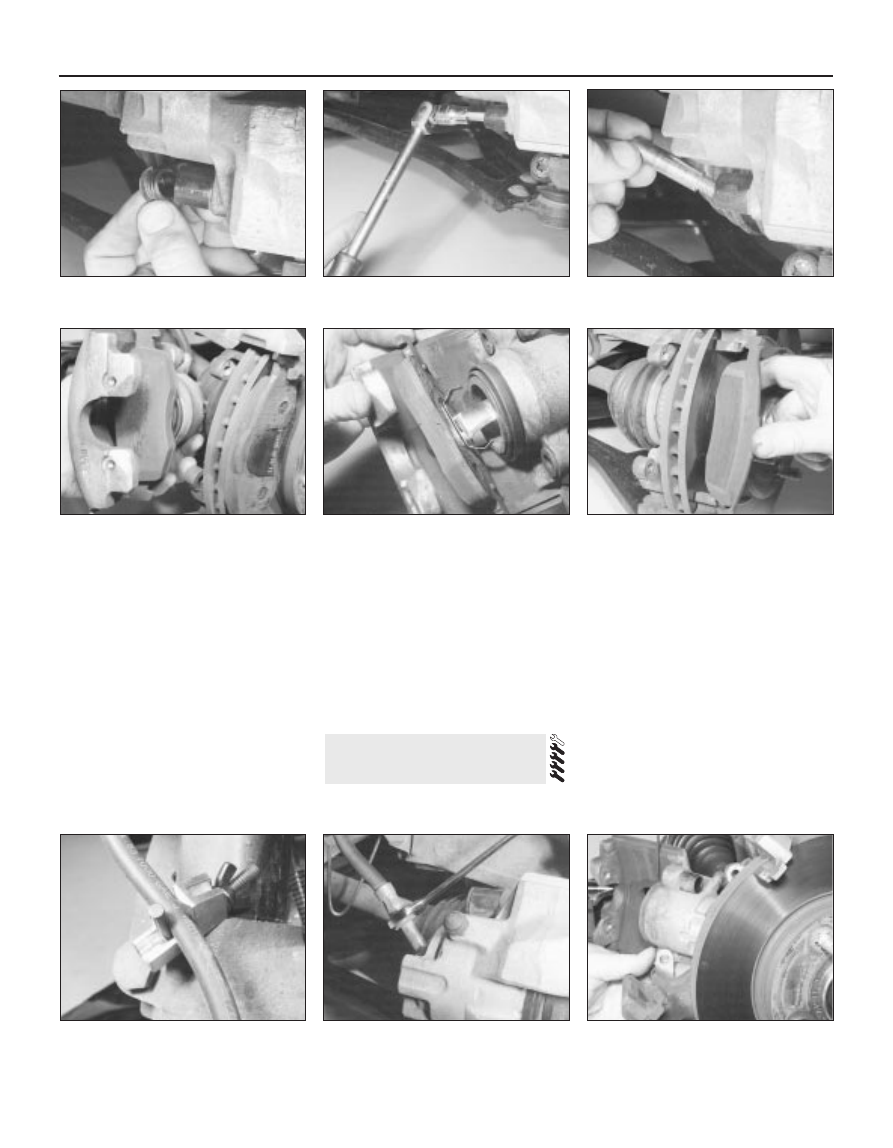Ford Mondeo (petrol engines). Manual - part 102

caliper bore, to provide room for the new
brake pads. A C-clamp can be used to
accomplish this. As the piston is depressed to
the bottom of the caliper bore, the fluid in the
master cylinder will rise slightly. Make sure
that there is sufficient space in the brake fluid
reservoir to accept the displaced fluid, and if
necessary, syphon some off first.
6 Fit the new pads using a reversal of the
removal procedure, but tighten the guide
bolts to the torque wrench setting given in the
Specifications at the beginning of this
Chapter.
7 On completion, firmly depress the brake
pedal a few times, to bring the pads to their
normal working position. Check the level of
the brake fluid in the reservoir, and top-up if
necessary.
8 Give the vehicle a short road test, to make
sure that the brakes are functioning correctly,
and to bed-in the new linings to the contours
of the disc. New linings will not provide
maximum braking efficiency until they have
bedded-in; avoid heavy braking as far as
possible for the first hundred miles or so.
Note: Refer to the warning at the beginning of
the previous Section before proceeding.
Removal
1 Apply the handbrake. Loosen the front
wheel nuts, jack up the front of the vehicle
and support it on axle stands. Remove the
appropriate front wheel.
2 Fit a brake hose clamp to the flexible hose
leading to the front brake caliper. This will
minimise brake fluid loss during subsequent
operations (see illustration).
3 Loosen (but do not completely unscrew) the
union on the caliper end of the flexible brake
hose (see illustration).
4 Remove the front brake pads as described
in Section 2.
3 Front brake caliper -
removal, overhaul and refitting
9•4 Braking system
2.3B Prise the plastic covers from the
ends of the two guide pins
2.3C Using a 7 mm Allen key, unscrew . . .
2.3D . . . and remove the guide bolts
securing the caliper to the carrier bracket
2.3E Withdraw the caliper from the disc,
and support it on an axle stand to avoid
straining the hydraulic hose. The outer pad
will normally remain in position against the
disc, but the inner pad will stay attached to
the piston in the caliper
2.3F Pull the inner pad from the piston in
the caliper
3.2 Brake hose clamp fitted to the front
flexible brake hose
3.3 Loosening the flexible brake hose at
the caliper
3.6 Removing the caliper carrier bracket
2.3G Remove the outer pad from the
caliper frame. Brush all dust and dirt from
the caliper, pads and disc, but do not
inhale it, as it may be harmful to health.
Scrape any corrosion from the disc.